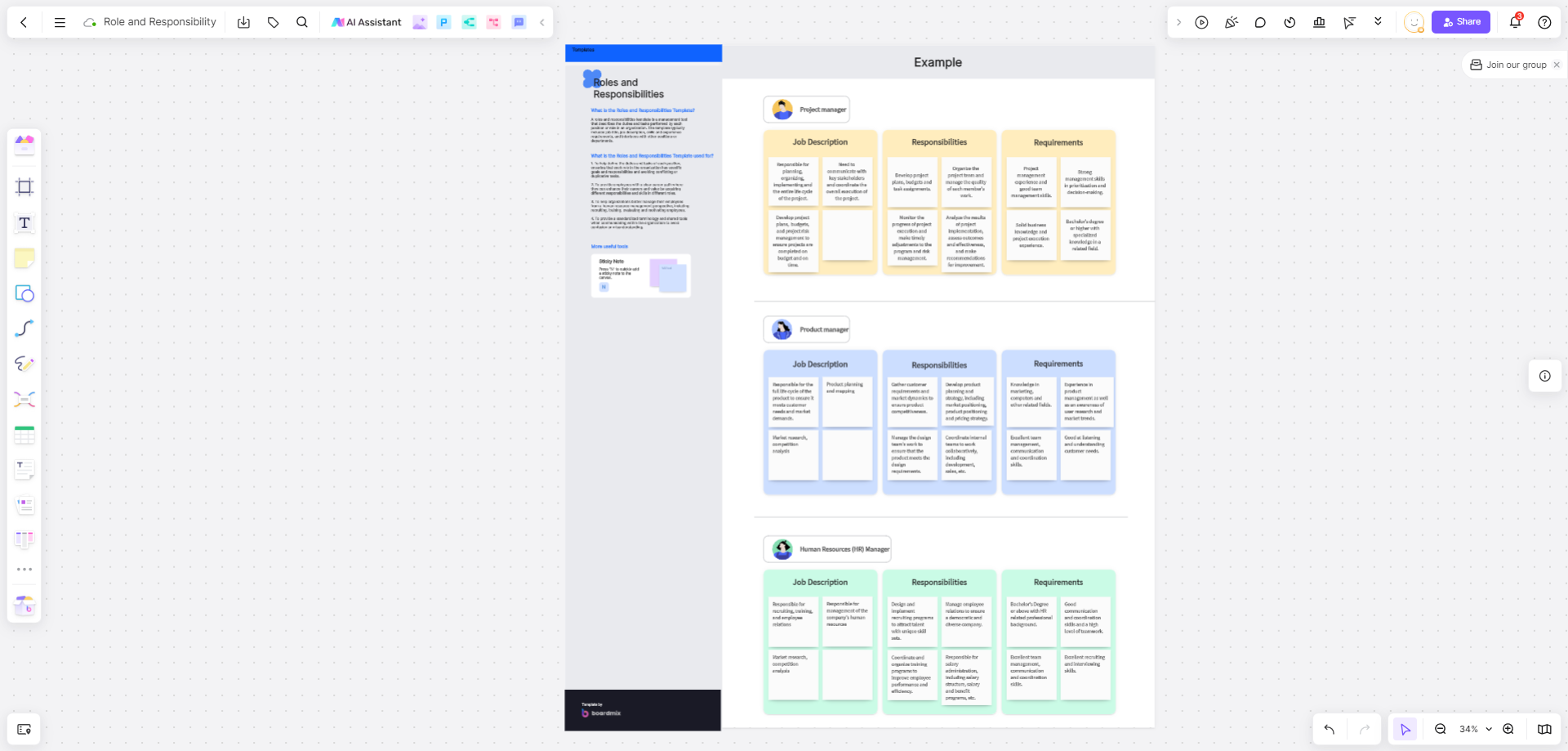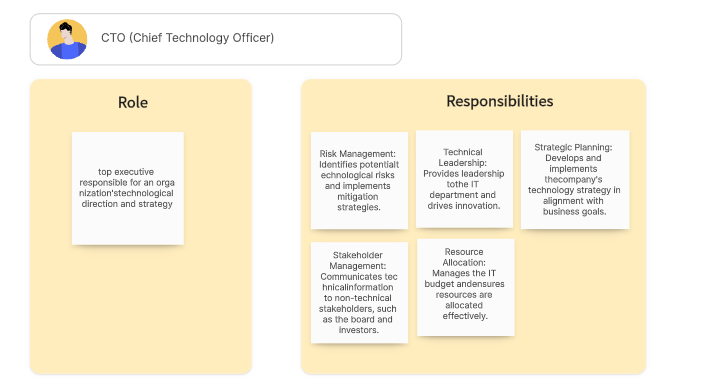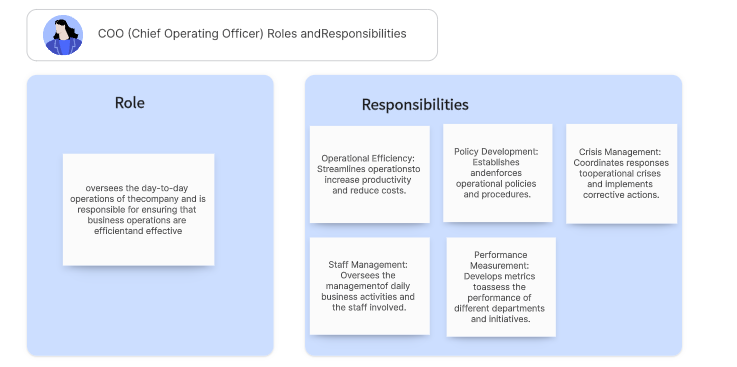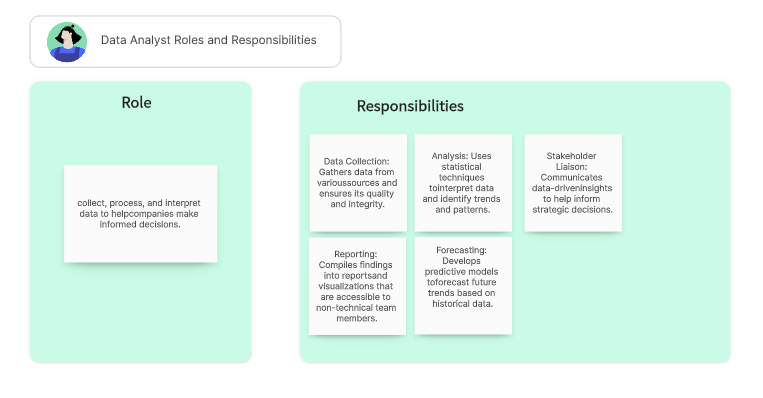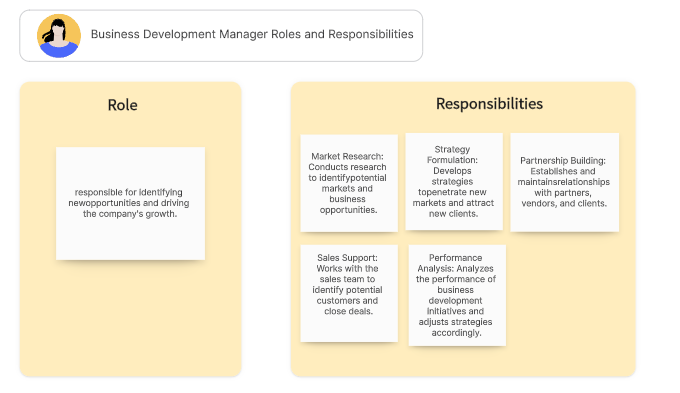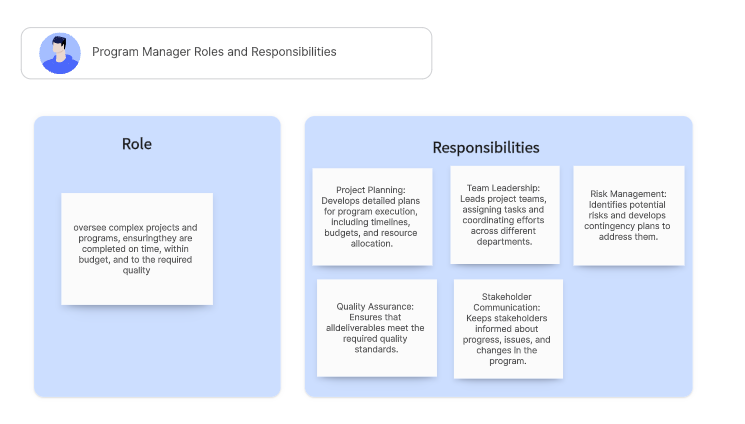In any organization, clearly defined roles and responsibilities are crucial for its smooth functioning. They help streamline the workflow, ensure accountability, and prevent confusion among team members. In this article, we will explore the importance of roles and responsibilities, how to define them effectively, and provide a comprehensive guide on creating a roles and responsibilities template.
What are Roles and Responsibilities: Understanding the Difference
Understanding the concept of roles and responsibilities is essential for the efficient functioning of any organization. Let's delve into what they mean:
Roles
A role refers to a defined set of behaviors, tasks, rights, and obligations that an individual assumes or is assigned while performing specific functions within an organization. It can be seen as the "job title" that one holds, which embodies a broad category encompassing several responsibilities.
Roles could vary from a team leader, project manager, marketing executive, human resource manager, to software developer, etc. The roles usually depend on the organizational hierarchy, business needs, and the skill sets of the employees.
Responsibilities
Responsibilities, on the other hand, are the specific tasks or duties that an individual is expected to carry out as part of their role. These tasks are actionable items tied to specific goals and objectives within the scope of an individual's role. They offer a clear idea of what needs to be done and what the organization expects from an individual.
For instance, a Human Resources Manager's responsibilities may include developing HR plans and strategies, managing recruitment processes, ensuring compliance with employment laws, conducting employee performance reviews, etc.
Key Differences
To put it simply, a role is the position one holds in an organization with a defined set of expectations, while responsibilities are the specific tasks or duties that an individual needs to perform in line with their role.
Understanding roles and responsibilities is crucial in any work setting. It helps in clarifying job requirements, setting expectations, aligning organizational goals, preventing duplication of efforts, promoting accountability, and fostering a culture of shared responsibility. This understanding is also key to avoiding misunderstandings and managing potential conflicts within the team.
Why Roles and Responsibilities are Important
1. Clarity in Expectations: When roles and responsibilities are clearly defined, employees know what is expected of them, which helps in setting realistic goals and targets.
2. Improved Accountability: When each role has clearly defined responsibilities, it becomes easier to hold individuals accountable for their tasks and results.
3. Efficient Resource Utilization: Well-defined roles ensure that resources are utilized efficiently, as each team member knows their specific duties and can focus on them.
4. Enhanced Teamwork and Collaboration: When roles and responsibilities are clear, team members can collaborate more effectively, knowing who to approach for different tasks and responsibilities.
5. Reduced Confusion and Conflicts: Overlapping roles can lead to confusion and conflicts. A well-defined roles and responsibilities template can help in avoiding such situations.
5 Roles and Responsibilities Examples: A Closer Look at Key Business Functions
Understanding the roles and responsibilities of various positions within an organization is crucial for effective management and team coordination. Each role plays a unique part in the success of the company. Here, we explore five distinct roles, detailing their responsibilities to provide a clearer picture of the diverse functions within a business.
1. CTO (Chief Technology Officer) Roles and Responsibilities
The CTO is the top executive responsible for an organization's technological direction and strategy.
- Strategic Planning: Develops and implements the company's technology strategy in alignment with business goals.
- Technical Leadership: Provides leadership to the IT department and drives innovation.
- Risk Management: Identifies potential technological risks and implements mitigation strategies.
- Resource Allocation: Manages the IT budget and ensures resources are allocated effectively.
- Stakeholder Management: Communicates technical information to non-technical stakeholders, such as the board and investors.
2. COO (Chief Operating Officer) Roles and Responsibilities
The COO oversees the day-to-day operations of the company and is responsible for ensuring that business operations are efficient and effective.
- Operational Efficiency: Streamlines operations to increase productivity and reduce costs.
- Policy Development: Establishes and enforces operational policies and procedures.
- Staff Management: Oversees the management of daily business activities and the staff involved.
- Performance Measurement: Develops metrics to assess the performance of different departments and initiatives.
- Crisis Management: Coordinates responses to operational crises and implements corrective actions.
3. Data Analyst Roles and Responsibilities
Data analysts collect, process, and interpret data to help companies make informed decisions.
- Data Collection: Gathers data from various sources and ensures its quality and integrity.
- Analysis: Uses statistical techniques to interpret data and identify trends and patterns.
- Reporting: Compiles findings into reports and visualizations that are accessible to non-technical team members.
- Forecasting: Develops predictive models to forecast future trends based on historical data.
- Stakeholder Liaison: Communicates data-driven insights to help inform strategic decisions.
4. Business Development Manager Roles and Responsibilities
Business development managers are responsible for identifying new opportunities and driving the company's growth.
- Market Research: Conducts research to identify potential markets and business opportunities.
- Strategy Formulation: Develops strategies to penetrate new markets and attract new clients.
- Partnership Building: Establishes and maintains relationships with partners, vendors, and clients.
- Sales Support: Works with the sales team to identify potential customers and close deals.
- Performance Analysis: Analyzes the performance of business development initiatives and adjusts strategies accordingly.
5. Program Manager Roles and Responsibilities
Program managers oversee complex projects and programs, ensuring they are completed on time, within budget, and to the required quality.
- Project Planning: Develops detailed plans for program execution, including timelines, budgets, and resource allocation.
- Team Leadership: Leads project teams, assigning tasks and coordinating efforts across different departments.
- Risk Management: Identifies potential risks and develops contingency plans to address them.
- Quality Assurance: Ensures that all deliverables meet the required quality standards.
- Stakeholder Communication: Keeps stakeholders informed about progress, issues, and changes in the program.
Each of these roles plays a critical part in the overall success of an organization. The CTO focuses on technological advancement, the COO on operational efficiency, the data analyst on deriving insights from data, the business development manager on growth opportunities, and the program manager on project execution. By understanding the roles and responsibilities of these key positions, companies can better allocate resources, improve communication, and drive success.
How to Define Roles and Responsibilities Effectively
1. Understand the Organizational Structure
Before defining roles and responsibilities, it's important to have a clear understanding of the organizational structure. This will help in identifying the different departments and their functions.
2. Identify Key Roles
Once you have a clear understanding of the organizational structure, identify the key roles within each department. Consider the skills and expertise required for each role.
3. Define Responsibilities for Each Role
For each identified role, define the specific responsibilities. Be as detailed as possible to avoid any ambiguity. Consider both short-term and long-term responsibilities.
4. Establish Performance Metrics
For each role, establish performance metrics to measure the effectiveness of the role. These metrics will help in evaluating the performance of the individual and making necessary adjustments.
5. Communicate Clearly
Once the roles and responsibilities are defined, communicate them clearly to all team members. Ensure that everyone understands their role and the expectations associated with it.
Tool for Defining Roles and Responsibilities
To ensure clarity and streamline workflow within an organization, clear definitions of roles and responsibilities are absolutely necessary. Boardmix offers a comprehensive and customizable Roles and Responsibilities template that can prove to be an invaluable tool for this purpose.
1. Clarity of Expectations
Boardmix’s Roles and Responsibilities template enables an organization to clearly define the expectations from each role. This helps to prevent any miscommunications, enhances productivity, and ensures alignment with organizational goals.
2. Ease of Access
Since Boardmix is an online platform, the templates created on it can be accessed anytime, anywhere. This brings in flexibility and ensures everyone can access the clearly defined roles and responsibilities whenever required.
3. Real-Time Collaboration
Boardmix enables multiple team members to work on a template simultaneously. This helps in gaining diverse insights, and more comprehensive and collaborative role definitions can be established.
4. Customizable Templates
Boardmix provides fully customizable templates. This means you can tweak the Roles and Responsibilities template as per your unique requirements. You can add or remove fields, modify content, or change the design to match your organization's branding.
5. Time-Saving
Crafting roles and responsibilities from scratch is a time-consuming process. With Boardmix's ready-to-use templates, you can save significant time and effort that can be better utilized for other strategic activities.
6. Ensures Accountability
When roles and responsibilities are clearly defined and accessible to everyone, it increases accountability among team members. It ensures everyone knows their specific tasks and areas they are accountable for, thereby improving overall efficiency.
7. Facilitates Performance Assessment
With clear-cut roles and responsibilities, performance assessment becomes easier as there's a clear standard to measure against. It enables fair evaluations based on defined parameters and fosters a transparent work culture.
Conclusion
Defining roles and responsibilities is a critical aspect of organizational management. It helps in ensuring clarity, accountability, and efficiency. By following the steps outlined in this comprehensive guide and using a well-structured roles and responsibilities template, you can effectively navigate the process of defining roles and responsibilities in your organization.

The Roles and Responsibilities template on Boardmix is an excellent tool that can significantly enhance organizational clarity, increase efficiency, save time, promote accountability, enable easier performance assessments, and foster a collaborative work environment. With its ease of use, customizability, and the opportunity for real-time collaboration, it's definitely worth exploring for your organization.











